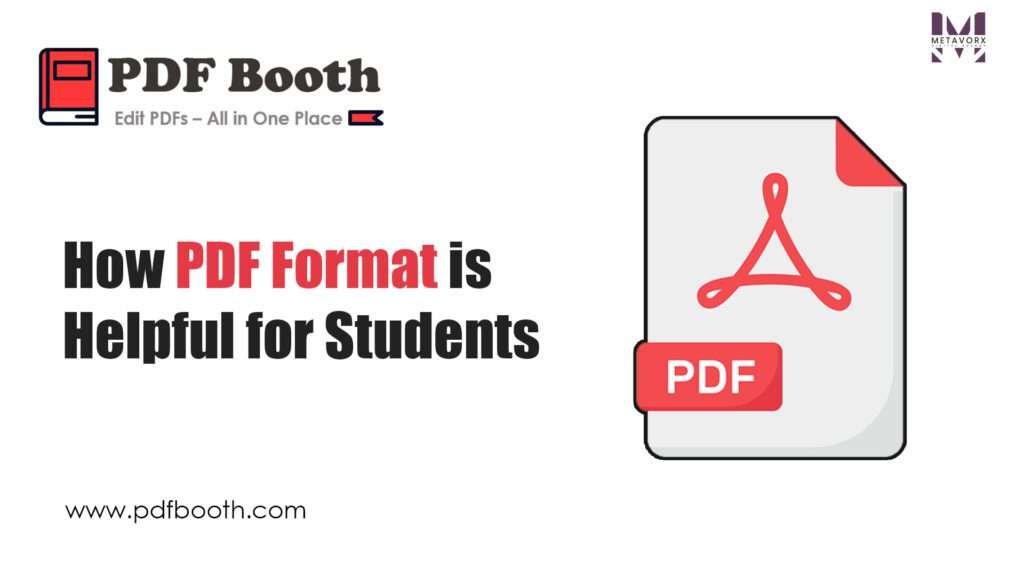How PDF Format is Helpful for Students

In today’s digital world, students rely heavily on technology to manage their academic work. From assignments to research papers, notes to presentations — everything is shared and stored digitally. Among the many file formats available, PDF (Portable Document Format) has become one of the most widely used formats for students worldwide. But why is it so popular, and how exactly does it help students? Let’s explore.
1. Universal Accessibility
One of the biggest advantages of PDF files is that they can be opened on any device — laptop, tablet, or smartphone — without changing the layout. Whether a student is using Windows, Mac, Android, or iOS, a PDF document looks exactly the same everywhere. This ensures consistency and saves time for students.
2. Preserves Formatting and Content
Students often create assignments with graphs, tables, and images. When shared in formats like Word or PowerPoint, the layout may change depending on the device or software version. With PDFs, the format remains intact, ensuring that teachers and classmates view the document exactly as intended.
3. Lightweight and Easy to Share
PDFs are generally smaller in size compared to other file formats, making them easy to upload and share. Whether students are emailing assignments, submitting projects online, or storing notes in the cloud, PDFs make the process smooth and hassle-free.
4. Secure and Reliable
Students can add passwords to their PDF files, protecting important work like thesis papers, project reports, or personal data. This ensures that their hard work is safe from unauthorized access.
5. Great for E-Books and Study Materials
Most e-books, research articles, and study guides are available in PDF format. The reason? It provides a clean reading experience and works perfectly with highlighting tools and note-taking apps. Students can even annotate their PDFs, making revision easier.
6. Compatibility with Online Tools
With online tools like PDF editors and converters, students can easily merge notes, split large files, or convert documents into other formats. For example, turning lecture slides (PPT) into PDF ensures easy readability and storage.
Conclusion
For students, the PDF format is more than just a file type — it’s a tool that simplifies studying, ensures consistency, and enhances productivity. From assignments to e-books, its universal accessibility, secure features, and compatibility make it a must-use format in education.
FAQs:
Why do teachers prefer receiving assignments in PDF format?
Because PDFs preserve formatting, making it easy to review and grade without layout issues.
Can students edit a PDF file?
Yes, with free and paid PDF editing tools, students can highlight, annotate, and even make changes to PDF content.
Are PDF files free to use for students?
Yes, creating and sharing PDFs is free, though some advanced editing tools may require subscriptions.
Can PDFs be read offline?
Absolutely. Once downloaded, students can access their PDF documents anytime, even without the internet.
